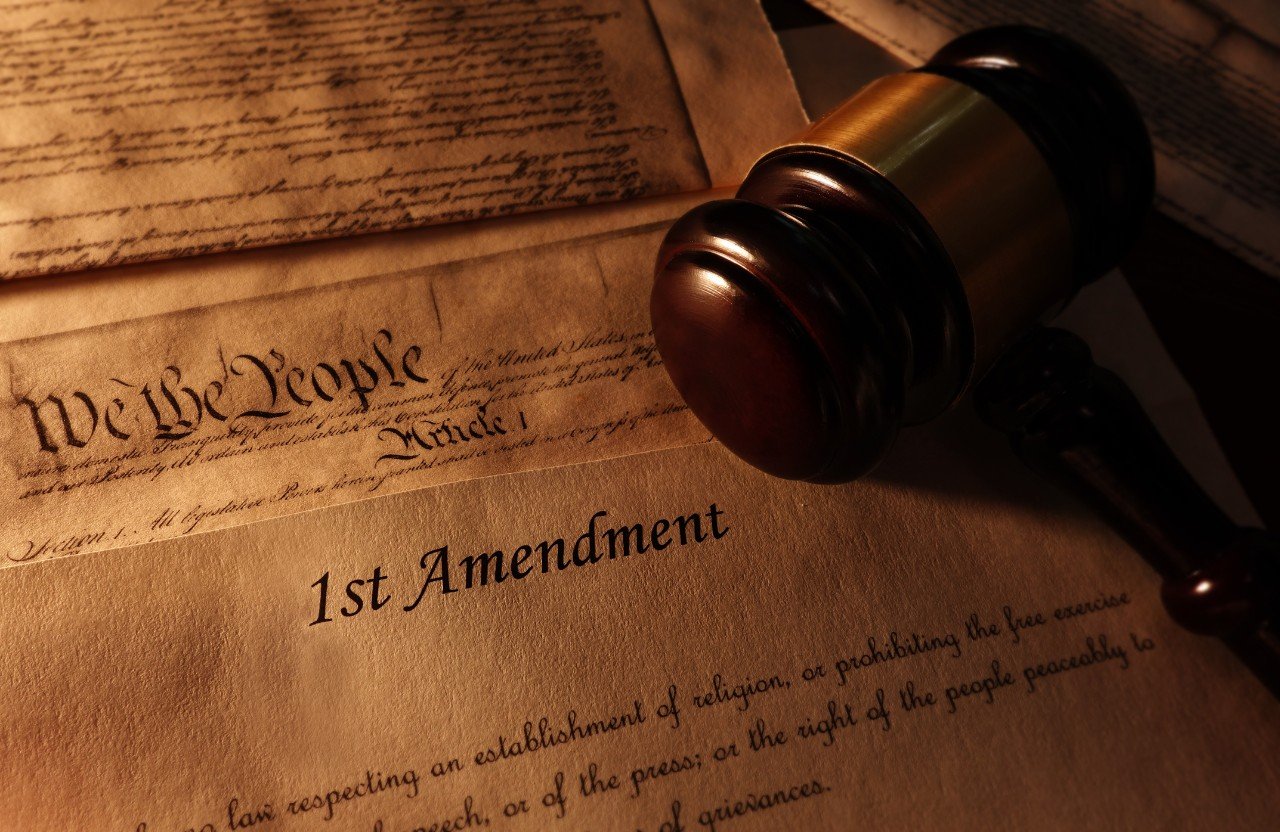
The First Amendment is a cornerstone of American democracy, safeguarding essential freedoms that shape our daily lives. It protects five fundamental rights: freedom of speech, freedom of religion, freedom of the press, freedom to assemble, and freedom to petition the government. These rights empower individuals to express opinions, practice any religion, report news without censorship, gather peacefully, and seek changes from the government. Understanding these freedoms helps us appreciate their impact on society. This article dives into 50 intriguing facts about the First Amendment, shedding light on its history, significance, and the ways it continues to influence our world.
The First Amendment: A Pillar of Democracy
The First Amendment of the United States Constitution is a cornerstone of American democracy. It guarantees essential freedoms that form the bedrock of a free society. Here are some fascinating facts about this crucial amendment.
- The First Amendment was adopted on December 15, 1791, as part of the Bill of Rights.
- It protects five fundamental freedoms: speech, religion, press, assembly, and petition.
- James Madison, often called the "Father of the Constitution," played a key role in drafting the First Amendment.
- The First Amendment originally applied only to the federal government, not the states.
- The Supreme Court extended First Amendment protections to the states through the Fourteenth Amendment.
Freedom of Speech: Speak Your Mind
Freedom of speech is one of the most cherished rights in the United States. It allows individuals to express their thoughts and ideas without fear of government retaliation.
- The First Amendment does not protect all types of speech; obscenity, defamation, and incitement to violence are exceptions.
- Political speech receives the highest level of protection under the First Amendment.
- Symbolic speech, such as flag burning, is also protected.
- The landmark case Tinker v. Des Moines (1969) affirmed students' rights to free speech in public schools.
- Hate speech is protected under the First Amendment, but it can be regulated if it incites violence.
Freedom of Religion: Worship Freely
The First Amendment ensures that individuals can practice their religion without government interference. This freedom is divided into two clauses: the Establishment Clause and the Free Exercise Clause.
- The Establishment Clause prohibits the government from establishing an official religion.
- The Free Exercise Clause protects individuals' rights to practice their religion as they see fit.
- The Supreme Court case Engel v. Vitale (1962) ruled that school-sponsored prayer in public schools is unconstitutional.
- Religious symbols on public property can be controversial and often lead to legal battles.
- The Religious Freedom Restoration Act (1993) was enacted to protect individuals' religious practices from government interference.
Freedom of the Press: Inform the Public
A free press is vital for a functioning democracy. It allows journalists to report on government actions and hold officials accountable.
- The First Amendment protects the press from government censorship.
- The Pentagon Papers case (1971) affirmed the press's right to publish classified information in the public interest.
- Shield laws in some states protect journalists from revealing their sources.
- The press can be sued for defamation, but public figures must prove "actual malice" to win a case.
- The rise of digital media has expanded the scope of press freedom.
Freedom of Assembly: Gather Together
The right to assemble peacefully allows individuals to come together to express their views and advocate for change.
- The First Amendment protects peaceful protests, marches, and rallies.
- The government can impose time, place, and manner restrictions on assemblies, but they must be content-neutral.
- The Civil Rights Movement of the 1960s relied heavily on the right to assemble.
- The Women's March in 2017 was one of the largest single-day protests in U.S. history.
- Counter-protests are also protected under the First Amendment.
Freedom to Petition: Voice Your Grievances
The right to petition the government allows individuals to seek remedies for grievances and influence public policy.
- Petitions can take many forms, including letters, emails, and online campaigns.
- The right to petition dates back to the Magna Carta in 1215.
- The First Amendment protects lobbying activities as a form of petitioning.
- The Supreme Court case NAACP v. Button (1963) affirmed the right to petition through litigation.
- Petitions have led to significant changes in U.S. law, such as the abolition of slavery and women's suffrage.
Landmark Supreme Court Cases
The Supreme Court has played a crucial role in interpreting the First Amendment and shaping its application.
- Schenck v. United States (1919) established the "clear and present danger" test for limiting speech.
- Brandenburg v. Ohio (1969) refined the standard for incitement to violence.
- New York Times Co. v. Sullivan (1964) set the standard for defamation cases involving public figures.
- Texas v. Johnson (1989) upheld the right to burn the American flag as symbolic speech.
- Citizens United v. FEC (2010) expanded First Amendment protections to corporate political spending.
Modern Challenges and Controversies
The First Amendment continues to face challenges and controversies in the modern era, especially with the rise of digital communication.
- Social media platforms have become battlegrounds for free speech debates.
- The government cannot censor speech on social media, but private companies can set their own rules.
- The rise of "fake news" has sparked discussions about the limits of press freedom.
- Hate speech and online harassment present new challenges for First Amendment protections.
- The balance between national security and press freedom remains a contentious issue.
Global Influence and Comparisons
The First Amendment has influenced other countries' approaches to free speech and individual liberties, but not all nations offer the same protections.
- Many democracies have adopted similar protections for free speech and press.
- Some countries, like Canada, have hate speech laws that limit certain types of expression.
- In the United Kingdom, defamation laws are more plaintiff-friendly than in the U.S.
- The European Convention on Human Rights includes protections for free speech, but they are balanced against other rights.
- Authoritarian regimes often restrict speech and press freedom to maintain control.
The First Amendment in Popular Culture
The First Amendment has been a popular subject in movies, books, and other forms of media, reflecting its importance in American society.
- Films like "The Post" and "Good Night, and Good Luck" highlight the role of a free press.
- Books such as "1984" by George Orwell explore themes of censorship and free expression.
- Music artists often invoke First Amendment rights to defend controversial lyrics.
- Television shows like "The Newsroom" delve into the challenges faced by journalists.
- The First Amendment is frequently referenced in political debates and public discourse.
The First Amendment's Lasting Impact
The First Amendment remains a cornerstone of American democracy. Its protection of freedom of speech, religion, press, assembly, and petition ensures that citizens can express their ideas and beliefs without fear of government retaliation. This amendment has shaped countless legal battles and societal changes, reinforcing the importance of individual rights.
Understanding these 50 facts about the First Amendment helps appreciate its role in everyday life. From landmark Supreme Court cases to its influence on modern social movements, the First Amendment's reach is vast.
Remember, the freedoms it guarantees aren't just historical footnotes; they're active, living principles that continue to shape the United States. So next time you voice an opinion or attend a protest, think about the First Amendment and its enduring legacy. It’s more than just words on paper; it’s the foundation of American liberty.
Was this page helpful?
Our commitment to delivering trustworthy and engaging content is at the heart of what we do. Each fact on our site is contributed by real users like you, bringing a wealth of diverse insights and information. To ensure the highest standards of accuracy and reliability, our dedicated editors meticulously review each submission. This process guarantees that the facts we share are not only fascinating but also credible. Trust in our commitment to quality and authenticity as you explore and learn with us.


